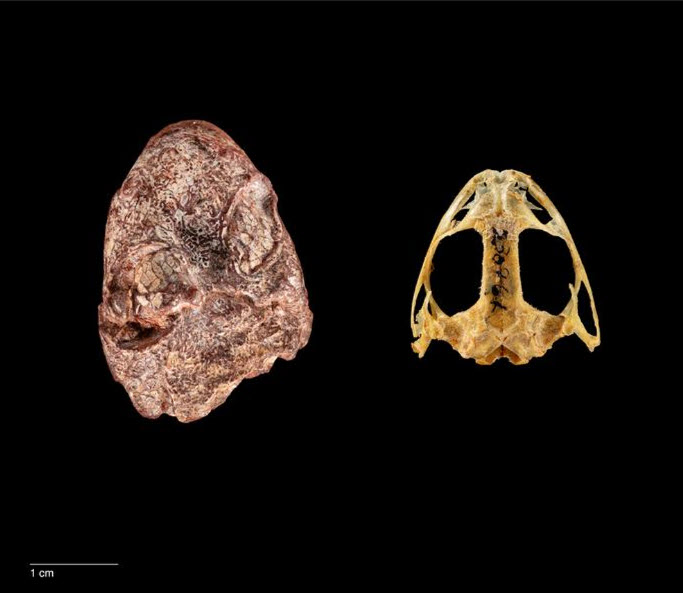Kermitops: Amphibian Ancestor Named After Kermit the Frog
Posted on March 21, 2024

Scientists discovered the fossilized skull of a 270-million-year-old ancient amphibian ancestor in a collection at the Smithsonian’s National Museum of Natural History. The researchers determined the skull belongs to a previously unknown amphibian species and named it Kermitops gratus in honor of Kermit the Frog.
The fossilized skull measures just over an inch long and possesses large, oval-shaped eye sockets. It was originally unearthed by the late paleontologist Nicholas Hotton III. He spent several field seasons excavating fossils from rock outcrops in north central Texas known as the Red Beds.
Calvin So, a doctoral student at the George Washington University and the lead author on the new paper, says in the announcement, "Using the name Kermit has significant implications for how we can bridge the science that is done by paleontologists in museums to the general public. Because this animal is a distant relative of today's amphibians, and Kermit is a modern-day amphibian icon, it was the perfect name for it."
The fossil has unique enough features that the researchers determined it belongs to a new genus, which they named Kermitops. The moniker is a play on the creature's cartoonishly wide-eyed face and is derived from a mashup of the words "Kermit" and the Greek suffix "-ops," which means face. The researchers also christened the new animal with the species name gratus to represent their gratitude for Hotton and the rest of the team that originally unearthed the fossil.
The research was published in the the Zoological Journal of the Linnean Society
Image: Brittany M. Hance, Smithsonian
